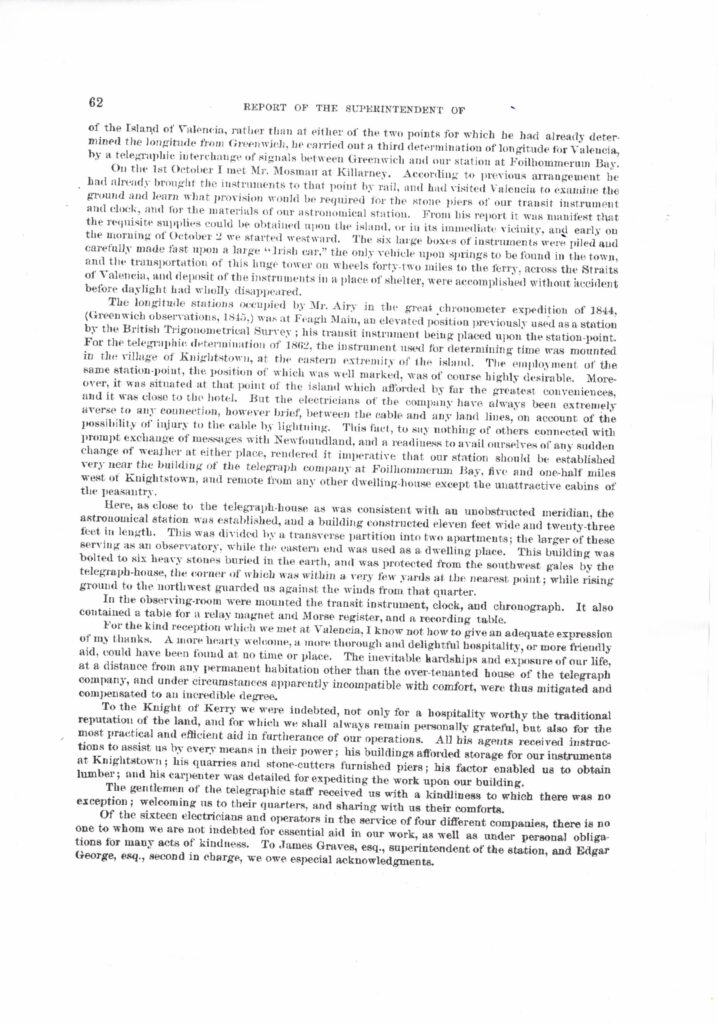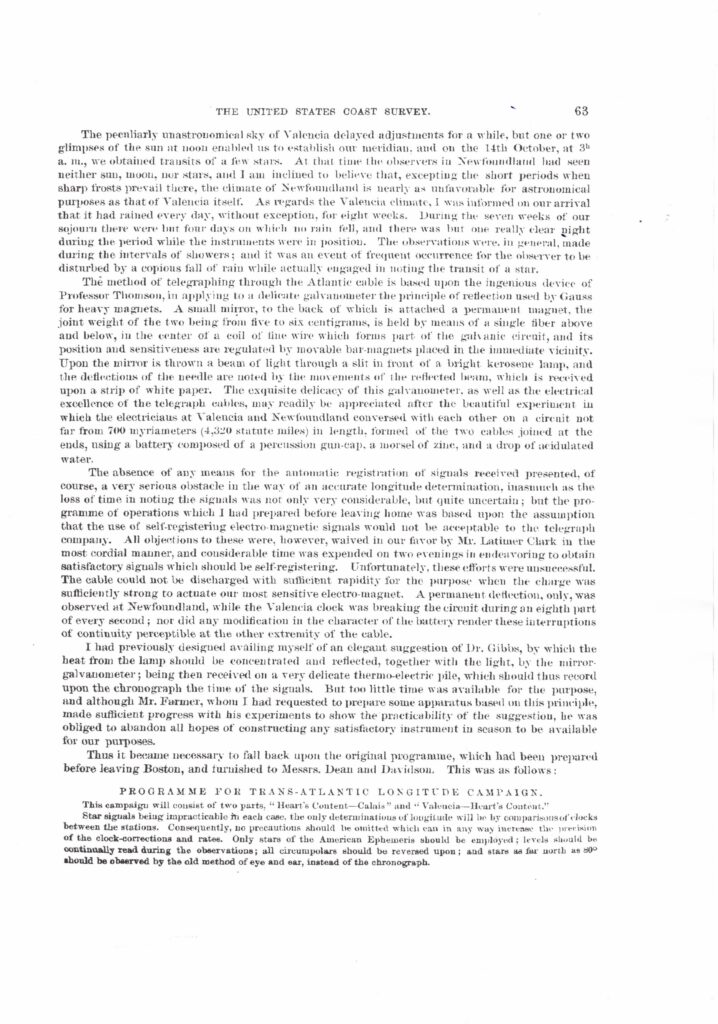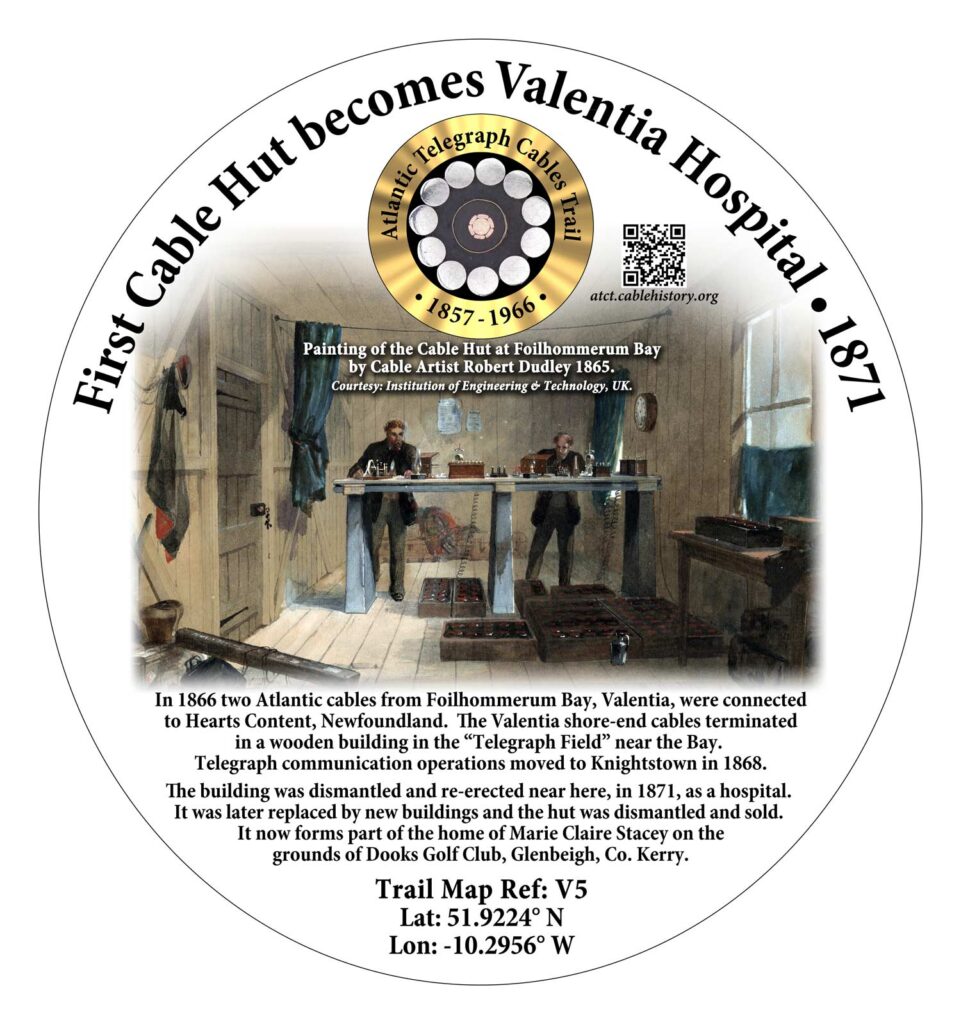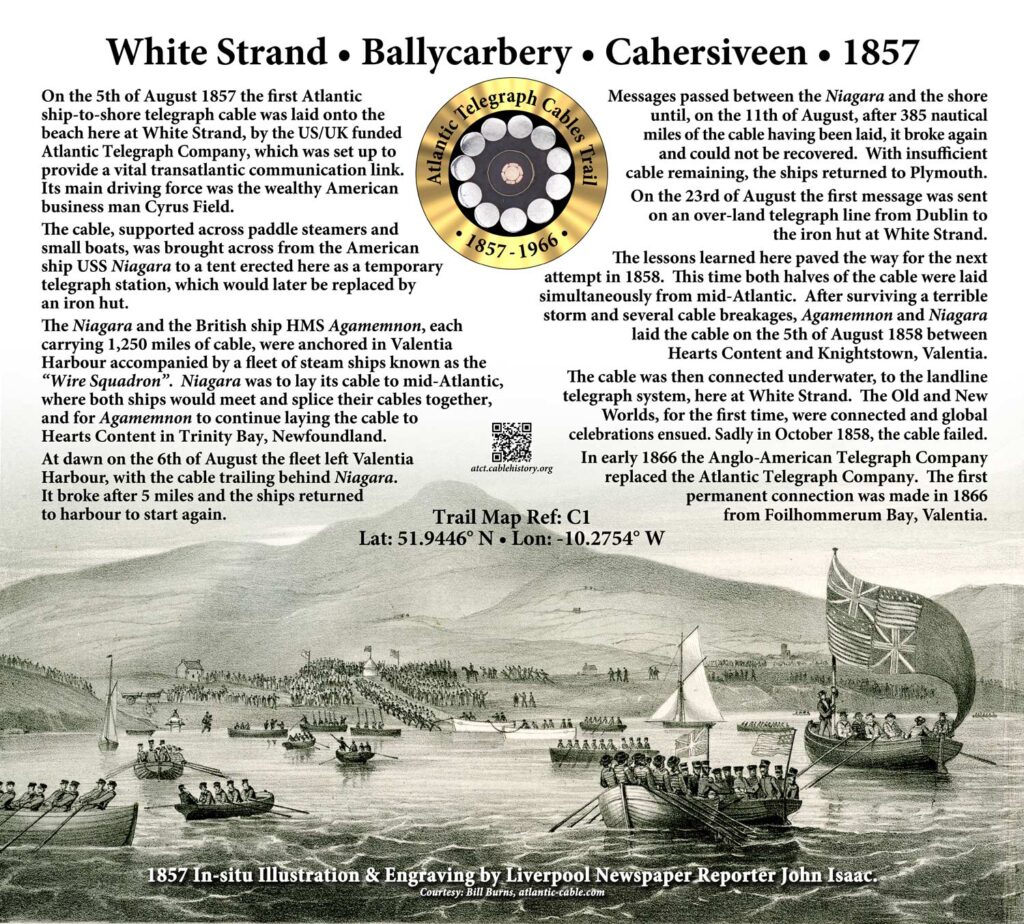
Location – Slate Yard, Knightstown
The 19th Knight of Kerry, Sir Peter Fitzgerald, resided on Valentia Island and was keen to establish the Knightstown location as a seaport and communication hub.
The second attempt was made in June 1858, with the two ships setting sail from the mid-Atlantic, the aim being to bring the cable in on the island at Knightstown, but the attempt again failed. On July 29th 1858 they made another attempt, the ships again starting from a mid-point and travelling to their respective continents. This time, it worked and Ireland and Canada were connected on August 4th and 5th 1858 when the Niagara docked at Trinity Bay and the Agamemnon landed at Valentia Harbour.
On August 16th, the first message was sent, followed by a message between Queen Victoria and US president James Buchanan: “Glory to God in the highest, and on earth, peace, good will to men.” Reception over the cable was poor with each character taking over 2 minutes to transmit, and the first message taking approximately 18 hours to send. Within three weeks, the cable was damaged due to high voltage and ceased to work.
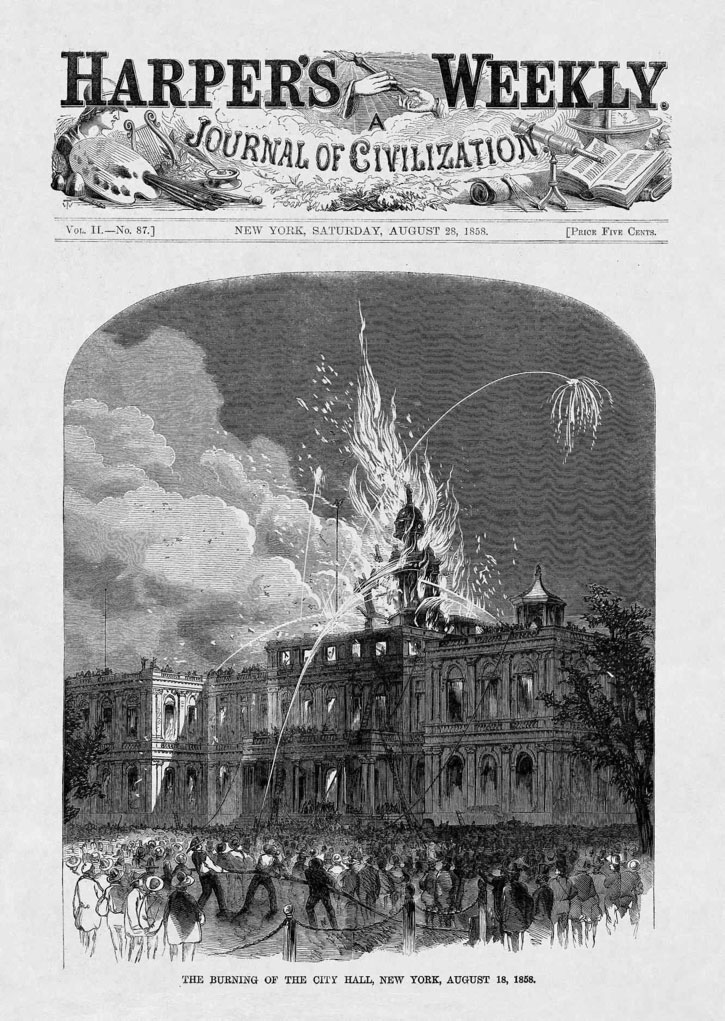
There was great disappointment at the costly failure and with the American Civil looming it would take 7 years before Cyrus west Field could again garnish support for another attempt.
New Locations chosen in Trinity Bay NF and Valentia to accommodate the largest ship in the world
Seven years passed since the disappointment of the 1858 cable failure. With American Civil War now over and again burgeoning prosperity, Cyrus West Field garnished enough support in America and England for another transatlantic cable expedition and in 1865 also had available the largest steamship in world available to lay the cable in one section. He also choose new locations in Trinity Bay & Valentia to accommodate the Great Eastern; those being Hearts Content NF and The Anglo-American Cable House on the Telegraph Field at Foilhomurrum. In July 1865 after laying the shore-end of the cable from the Anglo-American Cable House, the great Eastern steamed westward amid high expectations …the 1865 cable expedition is the most documented and recorded. Most of the iconic sketches and watercolours available were from 1865 and the renowned war time journalist William Russell nicknamed ‘The Bull Run Russell’ by Abe Lincoln was the main reporter travelling on the ship. The most iconic of these images is the ‘Marine’ painting in the Apotheosis of Washington ( https://www.aoc.gov/explore-capitol-campus/art/apotheosis-washington) in the Eye of the Rotunda, being decorated by Brumidi at that time. Unfortunately the 1865 expedition also failed but due to a mechanical failure on the ship. The located was recorded.
Courtesy Atlantic Cable.com https://atlantic-cable.com/grey2bg.jpg
“The preparations for laying the cable, so far as regards the land, have been completed a week ago. Two short cables have been carried across the Valencia ferry, a line of post have been placed along the principal road to Foilhummerum, and on these the wire now runs. A temporary wooden station has been built above the creek. This consists of six rooms, in one of which, facing north and south, is placed a table of Valencia slate.
Anglo – American Cable House – (built 1865)
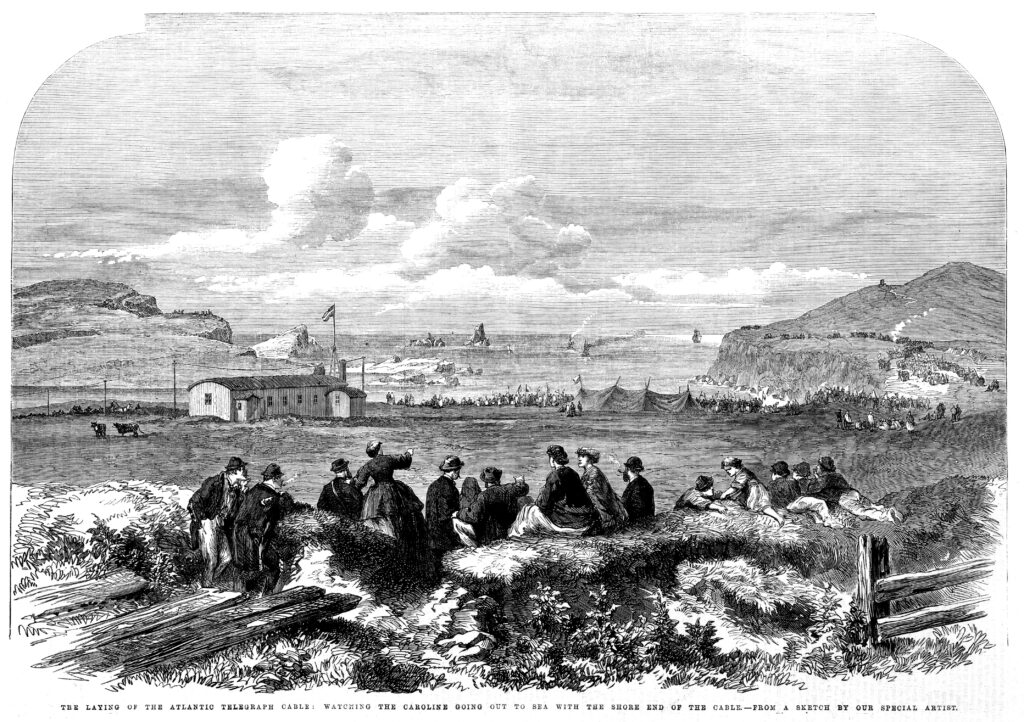
Fresco in Dome of the Rotunda on Capitol Hill-Painted by Brumidi in 1865
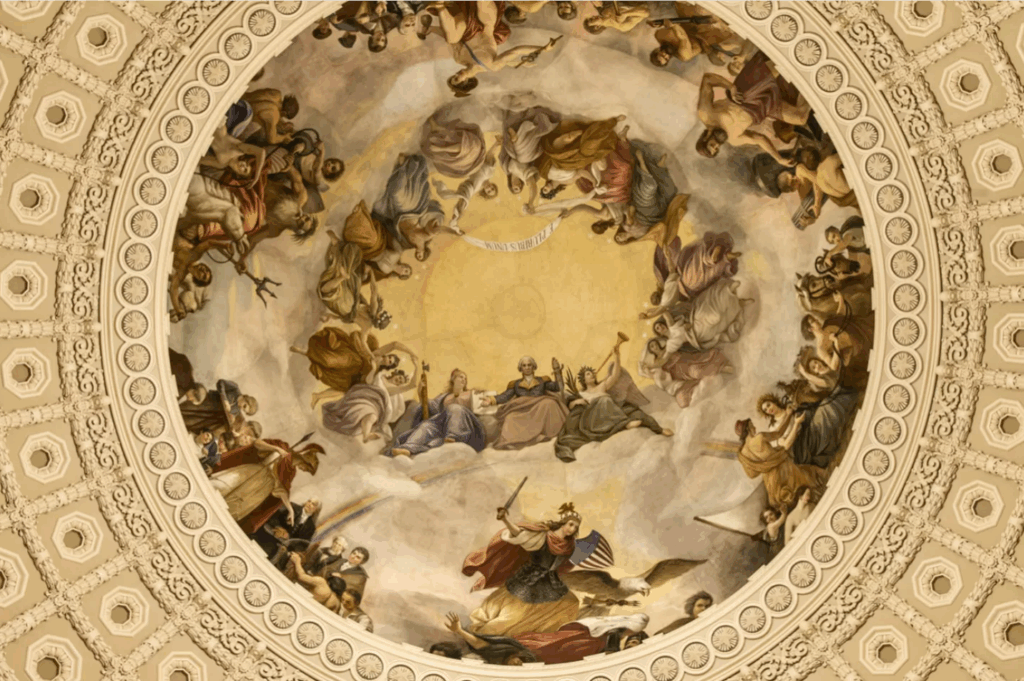
http://www.odonohoearchive.com/foilhomurrum-its-position-in-history/
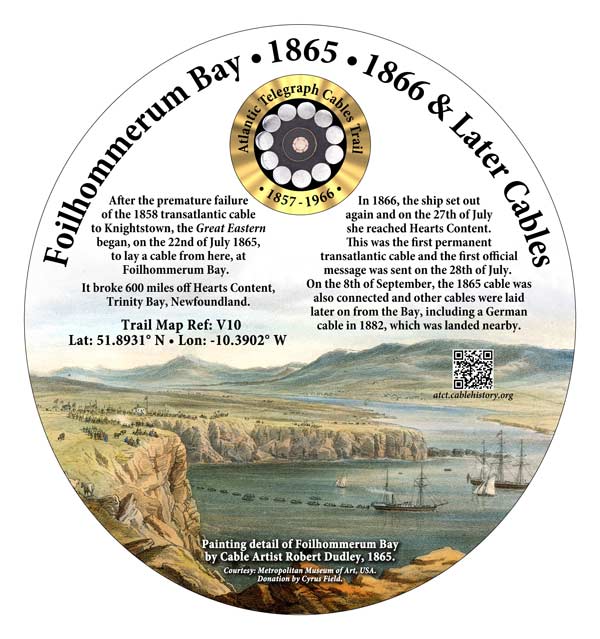
After a previous failure (C1) and a short-lived success (V3, V4,) an 1865 attempt by the SS Great Eastern to lay a transatlantic cable from here failed when the cable broke just 600 miles from Heart’s Content, Newfoundland. In 1866 the ship laid the first permanent cable and also recovered and completed the 1865 cable. Other cables were later laid from here.
A German cable was landed near the Bay in 1882.
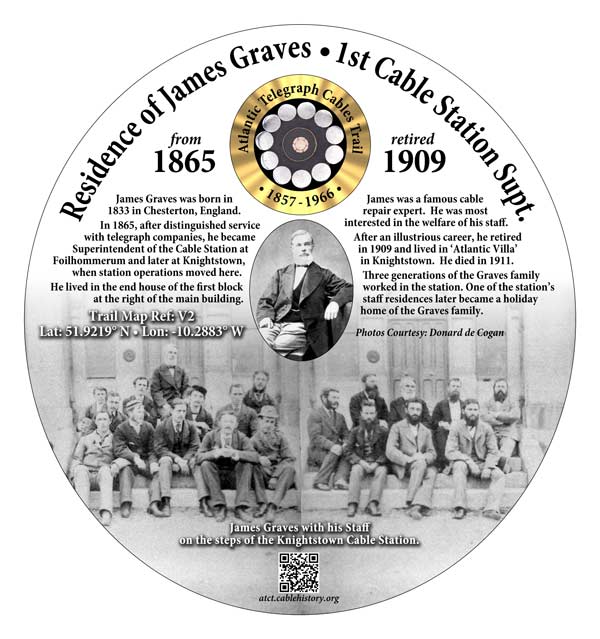
The 1866 permanent connection which achieved line speed of 2 minutes was at that time considered the Eighth Wonder of the World
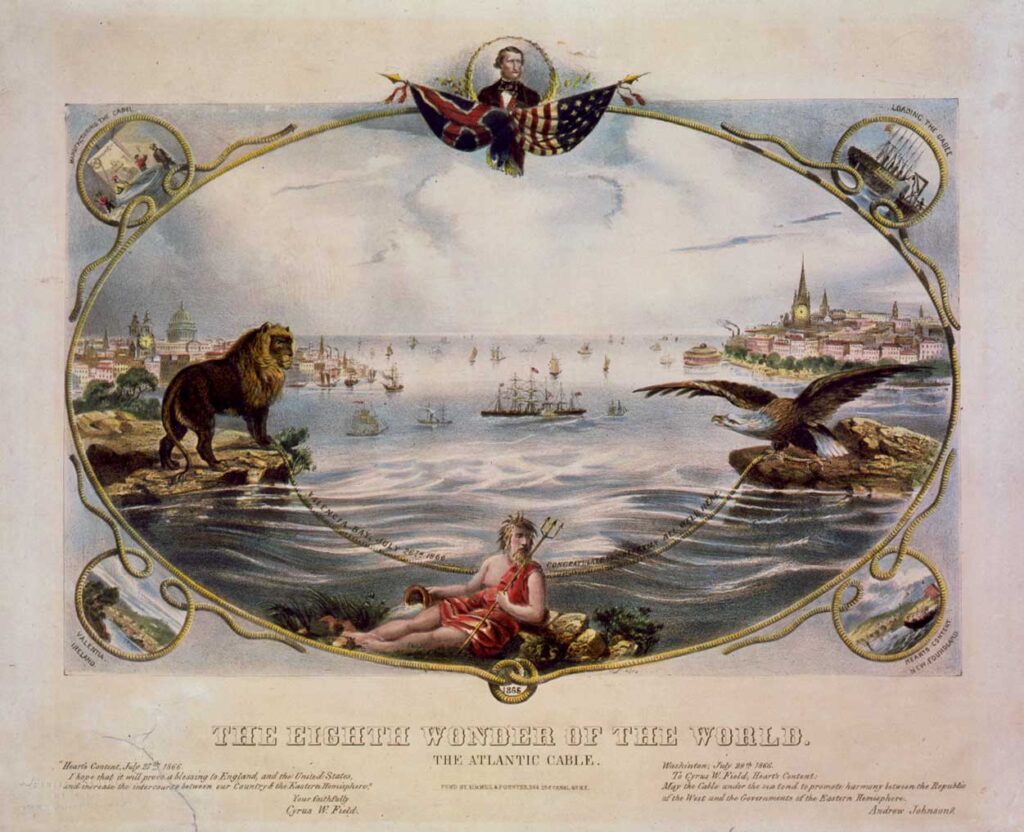
As a result of that success the following also occurred on site that year:
Longitude of Foilhomurrum
About three weeks after the cable success in July 1866, the United States Coast Survey came to the Telegraph Field, Valentia for the purpose of establishing the exact longitude on site .GMT was also transferred from the Shepherds Gate Clock in Greenwich to Harvard University. Harvard was previously Prime Meridian for North America and home to the Great Refractor which was the largest telescope in the world in 1866.
Extracts from USCS 1867 Superintendents report & Fifty-two Degrees North: Calculating Castleisland’s Place in Longitude History
“In 1866, astronomical longitude was determined at Foilhomurrum by officers of the United
3 Calculations and comparisons
For the project of 1866, a temporary observatory was erected near the telegraph station at Foilhomurrum. It was protected by rising ground on the northwest and was bolted to large stones in the ground. The piers were of stone.6 The observers there were eminent astronomers, Dr Benjamin Apthorp Gould (1824-1896), author of The family of Zaccheus.
Gould of Topsfield (1895)7 and Alonzo Tyler Mosman (1835-1913), after whom, in 1879, the Mosman Inlet in Etolin Island, Alaska, was named.
Telling the Time
The implications of global time differences became apparent in the wake of the successful cable link from Foilhomurrum Bay to Heart’s Content in 1866.

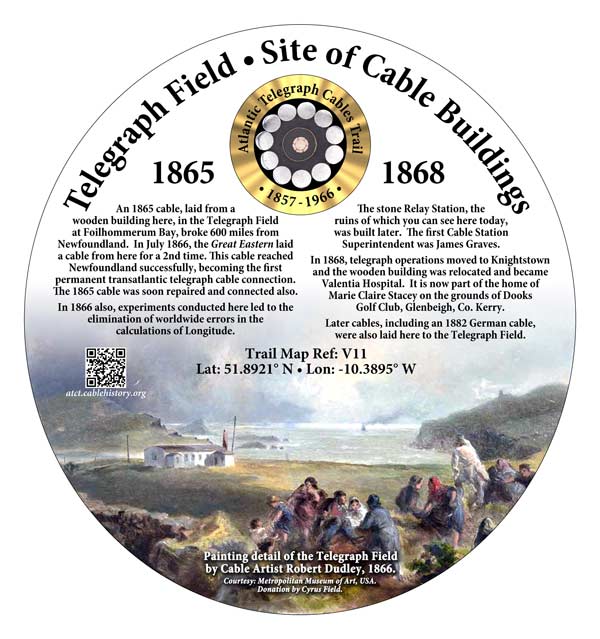
2nd USCS visit
Extracts from 1867 USCS Superintendents Report (hyper link) & Fifty-two Degrees North: Calculating Castleisland’s Place in Longitude History (Hyper Link)
Calculate the longitude difference between Greenwich and Harvard Observatory
Alonzo Tyler Mosman returned to Valencia the following year, 1867.9 On this occasion, he was in company with Professor Benjamin Peirce (1809-1880), Superintendent, United States
Coast Survey. Professor Peirce described the event:
On the 1st October I met Mr Mosman at Killarney. According to previous arrangement he had already brought the instruments to that point by rail, and had visited Valencia to examine the ground and learn what provision would be required for the stone piers of our transit instrument and clock, and for the materials of our astronomical station. From his report it was manifest that the requisite supplies could be obtained upon the island, or in its immediate vicinity, and early on the morning of October 2 we started westward. The six large boxes of instruments were piled and carefully made fast upon a large ‘Irish car’ the only vehicle upon springs to be found in the town, and the transportation of this huge tower on wheels forty-two miles to the ferry across the Straits of Valencia, and deposit of the instruments in a place of shelter, were accomplished without accident before daylight had wholly disappeared. The object of their expedition was to calculate the longitude difference between Greenwich Meridian and Harvard College Observatory.
It was anticipated that their work would be conducted at Knightstown, but for a number of reasons, this proved impractical. It was therefore decided to erect a more substantial observatory at Foilhomurrum, a place described as ‘remote from any other dwelling-house except the unattractive cabins of the
peasantry’. Here, as close to the telegraph-house as was consistent with an unobstructed meridian, the astronomical station was established, and a building constructed eleven feet wide and twenty-three feet in length. This was divided by a transverse partition into two apartments; the larger of these
serving as an observatory, while the eastern end was used as a dwelling place. This building was bolted to six heavy stones buried in the earth, and was protected from the southwest gales by the telegraph-house, the corner of which was within a very few yards at the nearest point; while rising ground to the northwest guarded us against the winds from that quarter.
In the observing-room, the transit instrument, clock, and chronograph were mounted. It also contained a table for a relay magnet and Morse register, and a recording table.
Professor Peirce remarked on the wonderful Kerry welcome they had received at Valencia:
For the kind reception which we met at Valencia, I know not how to give an adequate expression of my thanks. A more hearty welcome, a more thorough and delightful hospitality, or more friendly aid, could not have been found at no time or place. The inevitable hardships and exposure of our life, at a distance from any permanent habitation other than the over-tenanted house of the telegraph company, and under circumstances apparently incompatible with comfort, were thus mitigated and
compensated to an incredible degree.
United States Coast Survey – 1867 Superintendants Report Pages 62 & 63
